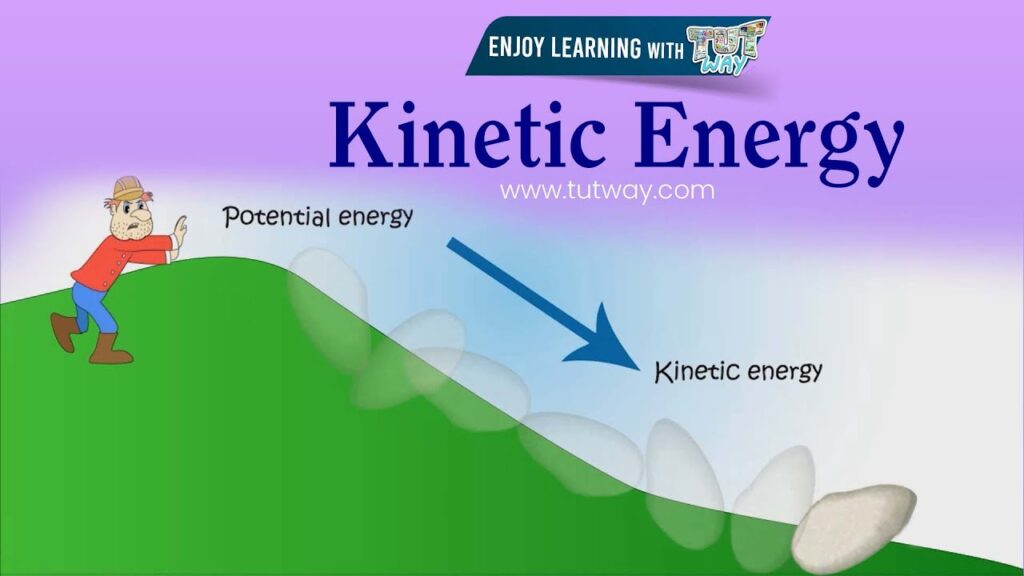Introduction
Kinetic energy is a fundamental concept in physics that plays a vital role in understanding motion and energy transfer. From a moving car to a falling object, kinetic energy is everywhere. But what is kinetic energy, and why is it so important in science and daily life? This comprehensive, SEO-optimized guide will explore the definition of kinetic energy, its formula, real-world examples, and practical applications to help boost your knowledge and search engine rankings.
What is Kinetic Energy?
Kinetic energy is the energy possessed by an object due to its motion. Any object that is moving has kinetic energy. The faster it moves or the more massive it is, the greater its kinetic energy. It is one of the main forms of mechanical energy, the other being potential energy.
Kinetic Energy Definition:
Kinetic energy is the energy an object possesses because of its motion.
This form of energy can be transferred from one object to another or transformed into other energy forms, such as heat or sound.
Kinetic Energy Formula
The formula to calculate kinetic energy is: KE=12mv2KE = \frac{1}{2}mv^2KE=21mv2
Where:
- KE = kinetic energy
- m = mass of the object (in kilograms)
- v = velocity of the object (in meters per second)
This equation shows that kinetic energy increases with the square of the velocity. For example, if you double the speed of an object, its kinetic energy increases by four times.
Types of Kinetic Energy
Kinetic energy isn’t limited to large, visible objects—it exists in various forms:
- Translational Kinetic Energy – Motion from one point to another (e.g., a car driving).
- Rotational Kinetic Energy – Energy due to rotation (e.g., spinning wheel).
- Vibrational Kinetic Energy – Movement caused by vibrations (e.g., sound waves).
- Thermal Energy – Caused by the motion of particles within matter (related to heat).
Real-World Examples of Kinetic Energy
Kinetic energy appears in countless everyday situations. Here are some common examples:
- Moving Vehicles: Cars, trains, and airplanes possess kinetic energy as they move.
- Sports: A soccer ball kicked into motion stores kinetic energy.
- Roller Coasters: As the coaster speeds downhill, its potential energy converts into kinetic energy.
- Wind: Wind turbines capture the kinetic energy of air in motion and convert it into electrical energy.
How Kinetic Energy Works with Potential Energy
Kinetic and potential energy are often interconnected. An object at rest, like a rock on a cliff, has potential energy. As it falls, this potential energy transforms into kinetic energy.
This energy transformation is essential in physics and engineering, and it underpins technologies from hydroelectric dams to roller coasters.
Applications of Kinetic Energy in Everyday Life
Kinetic energy powers many of the tools and technologies we use every day:
1. Energy Generation
Wind turbines convert the kinetic energy of moving air into electricity. Similarly, hydropower plants use the kinetic energy of flowing water.
2. Transportation
Every vehicle in motion relies on kinetic energy. Understanding it helps engineers design safer and more efficient vehicles.
3. Mechanical Systems
Machines like flywheels and pendulums store kinetic energy, making them useful in timekeeping, power tools, and engines.
4. Safety Features
Crumple zones in cars are designed to absorb kinetic energy during a crash, reducing the force on passengers.
Importance of Kinetic Energy in Science and Technology
Kinetic energy is a cornerstone concept in physics, engineering, and environmental science. By understanding kinetic energy, scientists and engineers can:
- Design better transportation systems
- Develop clean energy solutions
- Improve mechanical systems
- Advance robotics and AI with motion physics
It is also a core principle in Newtonian mechanics, taught in schools and universities worldwide.
Misconceptions About Kinetic Energy
Some common misconceptions include:
- Kinetic energy is only for fast-moving objects – Even a slow-moving object has kinetic energy if it has mass.
- Only living things can produce kinetic energy – All moving matter, alive or not, has kinetic energy.
- Kinetic energy and speed are the same – Kinetic energy depends on both speed and mass.
Conclusion
Kinetic energy is a fundamental principle that explains how objects move and interact in the physical world. Whether you’re studying physics, working in engineering, or simply curious about how the world works, understanding kinetic energy is essential. With applications ranging from clean energy to motion safety, kinetic energy continues to shape the world around us.


